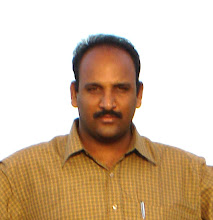Diviseema is an island lying at the mouth of River Krishna.
River Krishna branches off into two arms at Puligadda and joins Bay Of Bengal forming an island, "Diviseema". One branch, the smaller one, joins the sea at Sagarasangamam in Hamsaladeevi village. The other branches off further before joining the sea at Yetimoga forming two more islands called Yedurumondi and Nachugunta.
Diviseema has rich cultural heritage and having many ancient temples. My native place Ravivaripalem falls in Mopidevi Panchayat, lies on the bank of the smaller arm of River Krishna. Earlier, a low level 1936 built road cum aqueduct on the smaller arm connecting the island with the main land used to be submerged when ever there were floods, cutting off the island with rest of the district. Now a high level bridge was constructed on both the arms of the river after Mopidevi as part of NH 214A (Digamarru-Ongole) is catering the transportation needs of the island, became the lifeline of the area. Thenceforth, the aqueduct was closed to road traffic.
 The rich historical heritage of this area was enticing me from so many days. So I fulfilled it by visiting some of the Temples of the area on the festival day of Dasara (6-10-2011).
The rich historical heritage of this area was enticing me from so many days. So I fulfilled it by visiting some of the Temples of the area on the festival day of Dasara (6-10-2011).Route:
Ravivaripalem-Avanigadda-Viswanathapalli-Koduru-Hamsaladeevi-Vullipalem-Koduru-Bhavadevarapalli-Sangameswaram-Barrenkula-Ganapeswaram-Nangegadda-Avanigadda-Ravivaripalem
I started at my home at 5.30 a.m. Reached Viswanathapalli first to take the blessings of Addanki Nancharamma Talli, The Eternal Mother. I visit this temple very often. It was calm and silent in the morning. But on annual festival day the scene will be different. Thousands of people, along with their vehicles and cattle, throng in the village, move in a line to have darshan of Maa Nancharamma. People come from neighbouring districts too.
Hamsaladeevi:
Hamsaladeevi is having a famous Lord Venugopala (Abode of Lord Vishnu) temple and also this is the place where River Krishna confluences with Bay of Bengal. To reach the point of merger one has to travel a further 5 k.m via Palakaya Tippa village. Villagers belive that this Temple was built in only one night by Angels. During 1977 hurricane a large number of people made it a safe place. As they thought, it withstood the killer tidal wave by making so many people live. Ancient inscriptions are there on the pillars of mukha mantapa.
Vullipalem:
This village lies in between Hamsaladeevi and Koduru. Here Srimannarayana Swamy Temple is famous as it is claimed to be the only Temple of his holiness in entire Andhra Pradesh. Temple was under renovation. Deities were in a temporary structure. The old Temple was constructed 100 years ago by a seer came from Melkote, Karnataka, the place where Srimannarayana Swamy Temple was there ages ago. Temple will be ready by February 2012.
Bhavadevarapalli:
The name itself was derived from the name of Bhavanarayana Swamy (abode of Lord Vishnu), the principal deity of a big temple here. Temple has a high, nicely carved steeple and a fine garden. Entered into the front porch after a circumambulation. It seemed old but beautiful. It opens into mukha mantapa. Lord Bhavanarayana Swamy was there in the sanctum sanctorum adorned with so many flowers and garlands. Blessed me a great darshan.
Usually I inquire about the history of the place with the priest, when ever I visit a temple. This temple is one of the Pancha (five) Bhavanarayana Swamy Temples in the state. The others are Ponnuru, Pedaganjam near Ongole, Sarpavaram near Kakinada and Pattiseema near Rajahmundry.
Sangameswaram:
This place is few kilometers from Bhavadevarapalli via Kammanamolu. The road leads straight to Sri Sangameswara Swamy Temple (abode of Lord Shiva). Priest was performing puja. This temple is an architectural marvel to witness Sun rays directly falling on Shiva Lingam during the period of March 4th to 20th every year.
Ganapeswaram:
The Temple in this village was built in 1231, in the honour of Ganapatideva, great Kakatiya King of Warangal (1199-1269), by Jayapa Senani, his CinC of Elephant corps.
The deity in the temple is Sri Durga Ganapeswara Swamy (abode of Lord Shiva). There are separate temples for Maa Durga and Sri Ganapeswara swamy in one premises adjacent to each other. There is a big circumambulatory round around the temples together. Pilgrims were entering the premises, completing the circumambulation on the vehicles they came, parking them a side and going into the temple. Priests were busy performing puja in Maa Durga Temple. Huge crowd of pilgrims was there. At the entrance of Durga Temple there was an ancient inscription studded on a pillar.
Jayapa, I consider, as the greatest person hailing from this area. He was a man with many faces. He was Commander- In-Chief of Elephant forces in Orugallu King Ganapatideva's court. Ganapatideva honoured Jayapa with the title"Vairigodhuma Gharatta" for the services he rendered during Kalinga War. He wrote a book "Nritya Ratnavali" on Indian Dance during 1253-54, in Sanskrit, first ever book of its kind on dance in Indian Literature.



